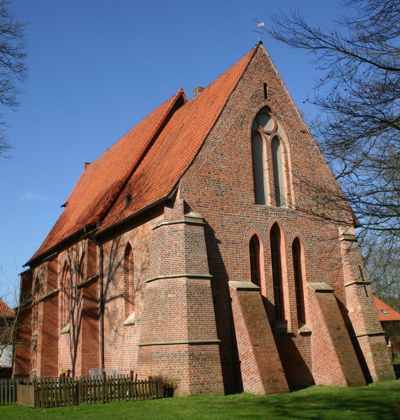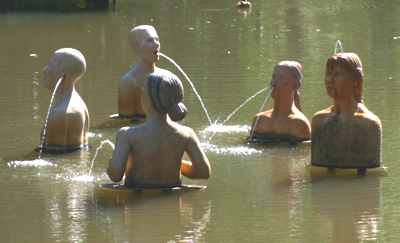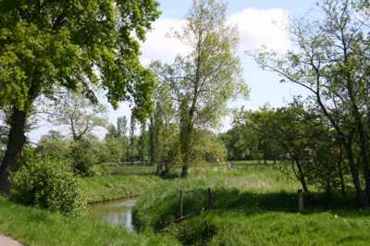



|
|

St.Mary's monastery church built at the end of the 13 th century with two visible ancient frescoes (the crowning of St.Mary on the Western wall and Deesis with Mary and John the Baptist under Christ Pantocrator on the ceiling) and a modern stained glass window above the altar. 
One of the old monastery administrative buildings, renovated and presently used by the local parish. 
Heiligenrode is becoming a place for artists, as may be seen from the installation of clay figures in the mill-pond (by one of the artists receiving a community stipend) called "Man does not live by bread alone". |
Heiligenrode is part of the community of Stuhr only since 1974, in the urban vicinity of Bremen and Delmenhorst. The village itself is embedded in the lovely, mainly agriculturally used sandy pre-heathlands along the banks of the Klosterbach. The place Heiligenrode dates back in its origin to the foundation of the Benedictine monastery through Count Friedrich of Mackenstedt. In the official foundation document of 1182 the monastery is endowed with estates, tithes and a mill. The monastery was early converted( from a male/female monastery) into a nunnery. During the 15/16th centrury it's economy flourished. After reformation it continued as a convent for ladies, until the last member of the convent passed away in 1964. After economic decline the regional prince took over the estates and works. The abolition of the monastery domain, the sale of the outlying farms and the beginning of new farm places on former monastery estates started the recent village development towards a modern democratic community. At present, Heiligenrode is a much-sought-after living place with approximately 2500 inhabitants. As jewels of the past there still remain the monastery church St. Mary and the adjacent administrator's building (now parsonage), and the complex around the watermill, all set under magnificent oak, beech, and ash trees of the old monastery forest. 
The flat lands of the Klosterbach |